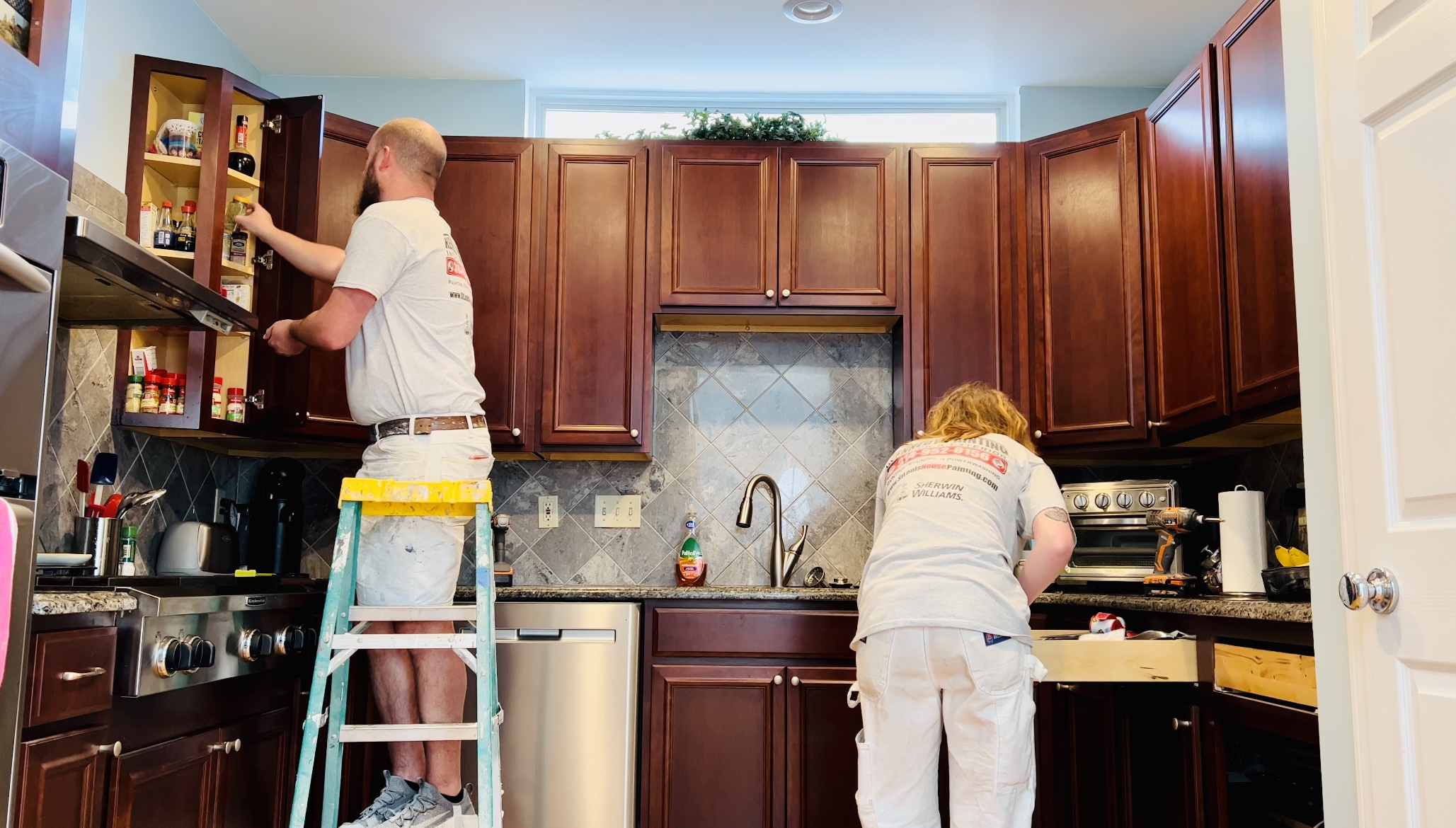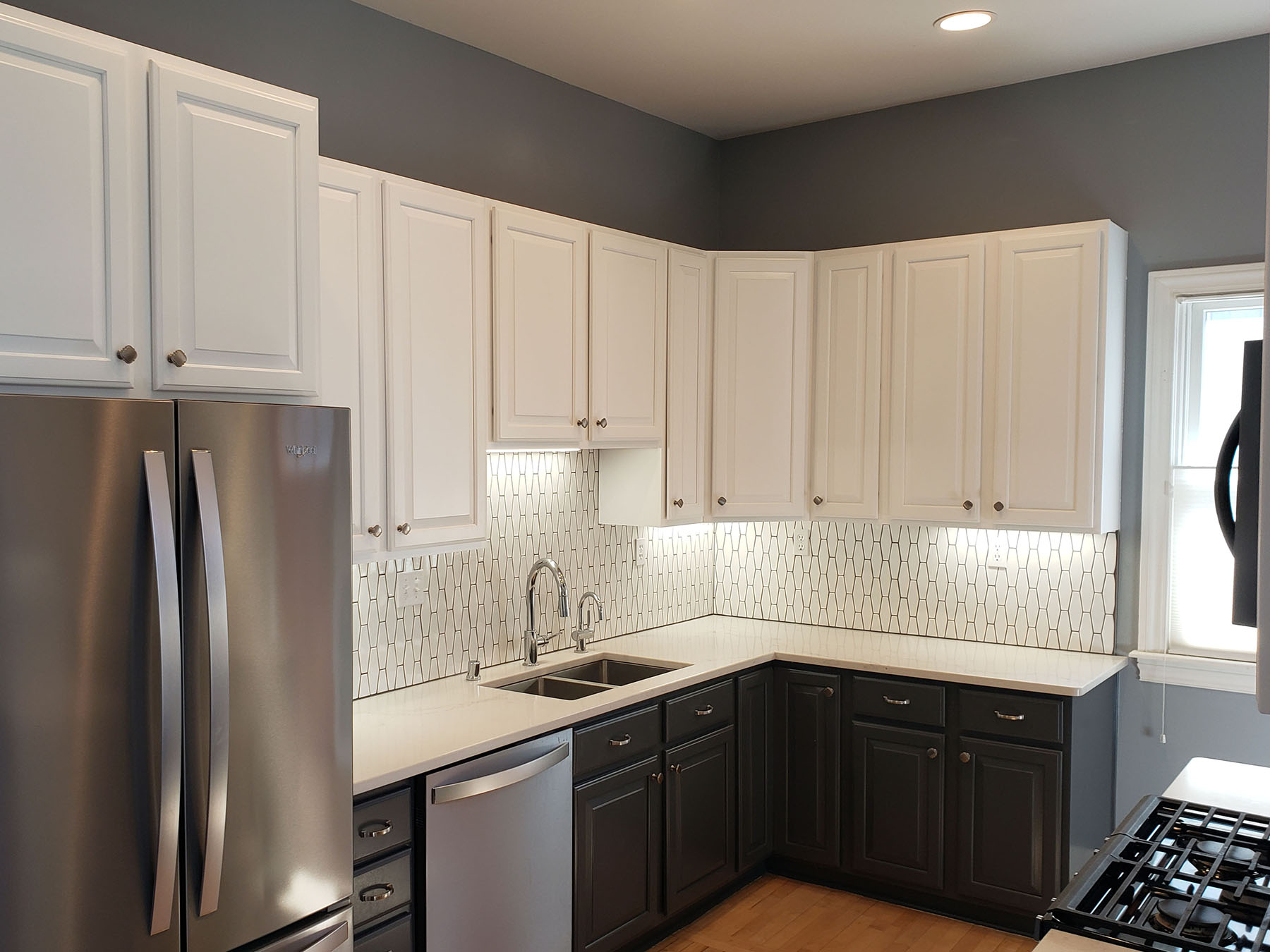Top Kansas City Cabinet Painting Companies
/kitchen-cabinet-painting-mistakes-2000-70d96e5b20d34d9f983816d1c06c88db.jpg)
Choosing the right company for your kitchen cabinet painting project is crucial for achieving a stunning and long-lasting result. Several reputable firms in Kansas City offer a range of services and pricing options to suit diverse needs and budgets. Careful consideration of their expertise, customer feedback, and painting techniques is vital before making a decision.
Five Reputable Kansas City Cabinet Painting Companies
The following table summarizes information on five highly-regarded cabinet painting companies in Kansas City, MO. Note that pricing is approximate and can vary depending on project scope and specifics. Customer reviews are summarized from online sources and reflect general sentiment, not an exhaustive representation of all opinions.
| Company Name | Services | Pricing Range | Customer Reviews |
|---|---|---|---|
| Company A | Cabinet painting, staining, refinishing, repair | $3,000 – $8,000 | Generally positive, praising attention to detail and professionalism. Some reports of minor scheduling issues. |
| Company B | Cabinet painting, custom color matching, hardware installation | $2,500 – $7,000 | High customer satisfaction, known for quick turnaround times and excellent communication. |
| Company C | Cabinet painting, kitchen remodeling, design consultation | $4,000 – $10,000+ | Mixed reviews, some praising the design expertise, others citing higher prices and longer project durations. |
| Company D | Cabinet painting, spray painting, lacquer finishes | $3,500 – $9,000 | Excellent reviews for their spray painting technique and smooth finishes. Highly recommended for modern styles. |
| Company E | Cabinet painting, antique restoration, distressed finishes | $4,500 – $12,000+ | Strong reputation for high-quality work, particularly with antique and unique cabinet styles. Premium pricing reflects expertise. |
Comparison of Painting Techniques, Kitchen cabinet painting kansas city mo
Three leading companies—Company A, Company D, and Company E—employ distinct painting techniques. Company A primarily utilizes brushwork for detailed work and achieving a more textured finish, particularly suited for traditional styles. Company D specializes in spray painting, offering a smooth, even coat ideal for modern or sleek designs. Company E incorporates a blend of techniques, employing brushwork for distressing effects and spray painting for base coats, achieving a unique aged or antique look.
Case Studies of Kitchen Cabinet Painting Projects
The following are descriptions of three completed projects, highlighting the transformation achieved.
Kitchen cabinet painting kansas city mo – Case Study 1 (Company A): Before: Dated oak cabinets with a honey-toned finish in a traditional kitchen. After: The cabinets were painted a soft, creamy white, enhancing the natural wood grain subtly. The overall effect is brighter and more modern while retaining a classic feel. The before photo showed dark, somewhat dull cabinets, while the after photo showcases a bright, airy space with crisp white cabinets.
Case Study 2 (Company D): Before: Plain, off-white shaker-style cabinets in a contemporary kitchen. After: The cabinets were transformed with a high-gloss, deep charcoal gray paint applied via spray painting. The sleek, even finish created a dramatic and sophisticated update. The before photo showed simple, somewhat bland cabinets. The after photo shows rich, dark gray cabinets that add a sense of luxury and modernity to the kitchen.
Case Study 3 (Company E): Before: Dark, worn cherry wood cabinets in a farmhouse-style kitchen. After: Using a combination of techniques, the cabinets were refinished with a custom-mixed grayish-blue paint. Distressing techniques were applied to create a worn, antique look, complementing the existing farmhouse aesthetic. The before photo depicted dark, scratched cabinets. The after photo showed cabinets with a beautiful, aged patina and a unique character, adding charm and warmth to the kitchen.
Cabinet Painting Preparation and Process

Transforming your kitchen cabinets with a fresh coat of paint is a rewarding project that can dramatically update your space. Proper preparation is key to achieving a professional, long-lasting finish. This section details the crucial steps involved in preparing your cabinets and applying the paint, ensuring a beautiful and durable result.
Cabinet Preparation
Thorough preparation is essential for a successful paint job. Neglecting this stage can lead to peeling, chipping, and an overall unsatisfactory finish. The following steps will ensure your cabinets are ready for paint.
- Cleaning: Begin by thoroughly cleaning the cabinets to remove grease, grime, and any existing finishes. Use a degreasing cleaner, warm water, and a soft sponge or cloth. Pay close attention to handles, knobs, and hard-to-reach areas. Allow to dry completely.
- Caulking: Inspect all seams and joints for gaps. Apply high-quality paintable caulk to fill any imperfections, ensuring a smooth, even surface. Allow the caulk to dry completely before sanding.
- Sanding: Once the caulk is dry, lightly sand the entire surface of the cabinets with fine-grit sandpaper (180-220 grit). This step creates a smooth surface for better paint adhesion. Use a sanding block for even pressure and avoid excessive sanding that can damage the wood. Wipe away all dust with a tack cloth.
- Priming: Applying a high-quality primer is crucial, especially if you’re painting over dark colors or stained wood. Primer ensures better paint adhesion, improves coverage, and prevents bleed-through. Use a high-quality primer designed for cabinets and apply two thin coats, allowing each coat to dry completely before applying the next.
Paint Selection for Kitchen Cabinets
Choosing the right paint is critical for durability and longevity. Different types of paint offer varying levels of durability, finish, and application methods.
Latex paints are popular due to their low odor, easy cleanup (water-based), and relatively quick drying time. Oil-based paints, while offering superior durability and a harder finish, require mineral spirits for cleanup and have a stronger odor. Both types are suitable for kitchen cabinets, but the choice depends on your preferences and the level of durability required.
Painting Process
Following a systematic approach ensures a professional-looking finish.
- Preparation: Ensure the room is well-ventilated and the cabinets are clean and dry. Protect the surrounding areas with drop cloths.
- Application: Use a high-quality brush, roller, or sprayer for even application. Apply thin, even coats, allowing each coat to dry completely before applying the next. For a smooth finish, use a high-quality brush and use long, even strokes. Avoid over brushing. Two to three coats are generally recommended.
- Drying Time: Allow ample drying time between coats, as specified by the paint manufacturer’s instructions. This prevents problems such as runs and sags.
- Hardware: Once the paint is completely dry, reattach the cabinet hardware.
Paint Type Comparison
| Paint Type | Durability | Finish | Cleanup | Drying Time |
|---|---|---|---|---|
| Latex | Good | Satin or Semi-gloss recommended | Water | Relatively Fast |
| Oil-Based | Excellent | High Gloss or Semi-gloss | Mineral Spirits | Slower |
| Acrylic-Alkyd Hybrid | Very Good | Variety of finishes available | Soap and Water | Moderate |
Cost and Considerations for Cabinet Painting: Kitchen Cabinet Painting Kansas City Mo

The cost of painting kitchen cabinets in Kansas City, Missouri, is a significant factor to consider before embarking on this home improvement project. Several variables influence the final price, making it crucial to understand these elements to budget effectively and manage expectations. A clear understanding of costs, both for DIY and professional services, will empower you to make informed decisions.
Kitchen Cabinet Painting Cost Breakdown
The price of painting kitchen cabinets varies considerably depending on several key factors. The following table illustrates a general cost range for different scenarios in Kansas City. Remember, these are estimates, and it’s always best to obtain personalized quotes from professionals.
| Factor | Cost Range |
|---|---|
| Cabinet Size (Small Kitchen, < 100 sq ft) | $1,500 – $3,000 |
| Cabinet Size (Medium Kitchen, 100-200 sq ft) | $3,000 – $6,000 |
| Cabinet Size (Large Kitchen, > 200 sq ft) | $6,000 – $12,000+ |
| Paint Type (Semi-gloss) | Adds approximately $500 – $1000 to the total cost |
| Paint Type (High-end, durable) | Adds approximately $1000 – $2000 to the total cost |
| Labor (Professional) | Typically accounts for 50-70% of the total cost |
| Additional Services (Repair, Refinishing) | Variable, depends on extent of work |
DIY vs. Professional Cabinet Painting
Choosing between a DIY approach and hiring professionals involves weighing several important considerations. The decision hinges on factors like your skill level, time availability, desired quality, and budget.
A DIY project can significantly reduce the overall cost, potentially saving thousands of dollars compared to professional services. However, it demands a substantial time commitment, often extending the project timeline far beyond initial expectations. The quality of the finished product is entirely dependent on your skills and attention to detail; imperfections are possible, especially for complex designs or extensive cabinet damage. Furthermore, DIY projects may require purchasing specialized tools and materials, adding to the overall expenditure.
Conversely, professional cabinet painters offer expertise, efficiency, and a high-quality finish. They possess the skills and experience to handle intricate details, ensuring a professional and long-lasting result. While the upfront cost is significantly higher, professionals can often complete the job more quickly, minimizing disruption to your daily life. They also handle all aspects of the process, including material selection, preparation, and cleanup, leaving you with a beautifully painted kitchen without the hassle.
A Personal Account of Cabinet Painting Costs and Considerations
My own experience renovating my kitchen involved a careful evaluation of cabinet painting options. Initially, I considered a DIY approach, enticed by the potential cost savings. However, a realistic assessment of my limited free time and lack of experience with intricate painting techniques led me to reconsider. I estimated the time commitment for a DIY job would stretch over several weekends, potentially disrupting my family’s schedule and impacting my other responsibilities. The cost of necessary materials, including high-quality paint, brushes, rollers, and sanding equipment, also factored into my calculations. A detailed quote from a reputable local painter revealed that the professional cost, while higher upfront, ultimately offered better value. The professional’s efficiency ensured a far quicker turnaround, and the superior quality of the finish justified the increased expense. The professional’s expertise in surface preparation and paint application minimized the risk of imperfections, ensuring a long-lasting and visually appealing result. The peace of mind that came with a guaranteed outcome and professional cleanup was also invaluable. Ultimately, the professional route, while more expensive initially, proved to be the most efficient and effective solution for my situation.
